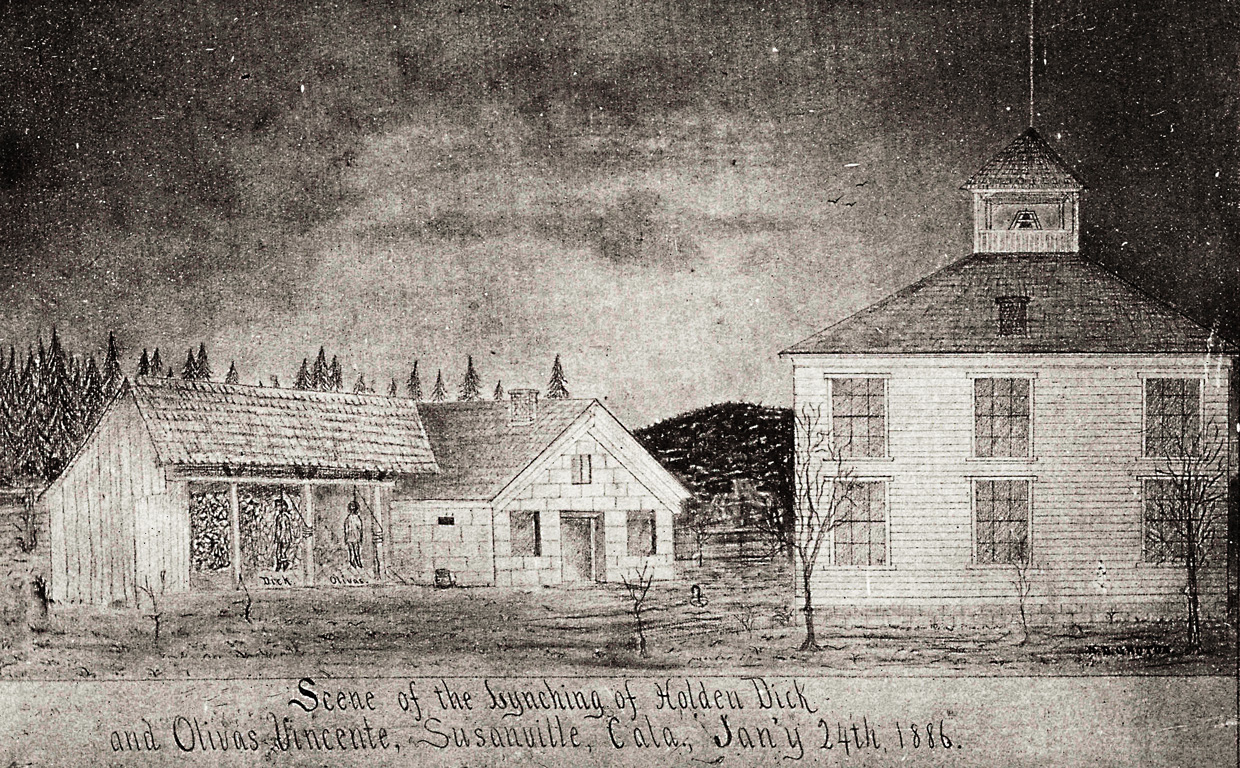
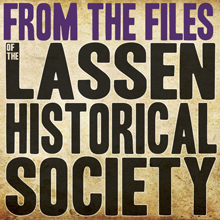
By Susan Couso
Holden Dick was a bad man, and he spent a lot of time in the company of other bad men. He was a member of the Pit River tribe, but the tribe was probably not too fond of his deeds either. Holden Dick spent his life trying to take short-cuts to wealth and would apparently do most anything for money.
Take Dick’s easy way of gold mining. Reportedly, in March of 1881, he began his gold mining career by hijacking a shipment of gold ore, which was traveling through Modoc county.
The freight wagon was accompanied by three guards. Dick immediately killed two of the sentries, but the third, and the driver, held up their hands and surrendered. The masked attacker allowed them to walk off through the desert.
Holden Dick tied his horse to the wagon and drove away to a location in the desolate South Warner mountains, where he reportedly had a hidden cave. From time-to-time Dick would bring a small batch of gold to Susanville or Alturas and tell stories of his mining claim.
Many suspected him of the crime, but there was no solid evidence. The ‘mine’ was never found.
In 1883, on the Madeline Plains, Holden Dick was suspected of murdering an immigrant, only noted as a “Chinaman” in the historical record. The poor man’s body was found a bit later, and it was assumed that he had been murdered for the $759 that he had been carrying. Again, there was not enough evidence to arrest Dick.
But, near the end of September in 1883, Dick made his most disgusting and memorable effort, the horrific murder of Samuel B. Shaw.
Shaw had a home on Madeline Plains. It was not a luxurious affair, just one room, about sixteen feet square. The cabin was only about a year old, and the fireplace had not yet been finished, just a space in the wall ready for its construction. Sam used this opening for a door, as there had been no door or window cut out yet.
Sam’s place was on the west side of Madeline Plains at the mouth of a ravine, and up the ravine, springs burst forth creating a small stream. It was an isolated place, the nearest neighbor, George Bailey, was nearly two miles away, but Sam usually had the company of some Native families who would camp nearby.
There were supposedly problems with at least one neighbor, and this may have been Sam’s ‘downfall’. The dispute was never made clear, but it was a serious issue. On September 28th or 29th, someone killed Samuel Shaw.
One of the Native women stopped in to see Sam and was met with a gruesome sight. Sam was in bed, at least most of him. He was carefully ‘tucked in’ with a blanket, but his head was missing, and blood was splattered throughout the site. This was on October 13th, so the corpse was a bit ‘ripe’.
The woman alerted her husband, and the news of the shocking event spread.
The sheriff was notified, and the investigation began. When authorities from Susanville arrived at the scene, they discovered that Justice William Roney, from Bieber, had preceded them.
Roney, after finishing his inspection, had buried the body. But when Justice James Blake and Albert Shinn arrived at the scene, they still had plenty of evidence to look over.
They found that Shaw had been shot with a load of buckshot before his head was removed. There was buckshot in the pillow, embedded in the headboard and the wall, and large blood stains everywhere.
Most everything, except the missing head, seemed to be in its appropriate place. There appeared to have been no struggle, and with the exception of the blood, buckshot, a bloody case knife and hand saw, clues were few.
The missing head was a problem. Just where was it? There was a probable answer when, a few weeks after the crime, a man’s head was brought to the ranch of Captain Follett by his dogs.
It was a grisly sight and had obviously been buried. Part of the lower portion was missing, and it was in such a deteriorated condition as to be unidentifiable. All indications pointed to it being the head of Shaw, but the Follett farm was seventy-five miles from the murder site.
As time went on, the case was getting more confusing and complicated.
Suspicion was drawn to Jackson Leafer (or Looper) who had quarreled with Shaw, and after the murder suddenly disappeared. He was much later discovered to be in Philadelphia, and in March of 1885, Modoc County Deputy Sheriff Slingsby travelled to Philadelphia and arrested him.
Leafer denied any wrongdoing, but said that once Shaw’s body was found, he was afraid that he would be blamed because the two had argued. Leafer was brought back west, but he was let go due to a lack of evidence.
Meanwhile, the wife of Captain Dick, a Pit River tribe member, had told him who the culprits were, but swore him to secrecy. When she died, her husband told authorities that two ‘Indians’, Holden Dick and Billy, were to blame.
The authorities were finally looking at some good evidence, and Holden Dick and Billy became the focus of their investigation.
Then, on Thursday, February 12, 1885, Holden Dick was arrested by Sheriff Christopher Rachford in Modoc County. He also arrested Charley Fox, as a witness. The two men were placed into the jail in Alturas, and on Sunday evening, March 1st, 1885, Holden Dick arrived in Susanville.
Who ‘Billy’ was or what happened to him, was never brought up again.
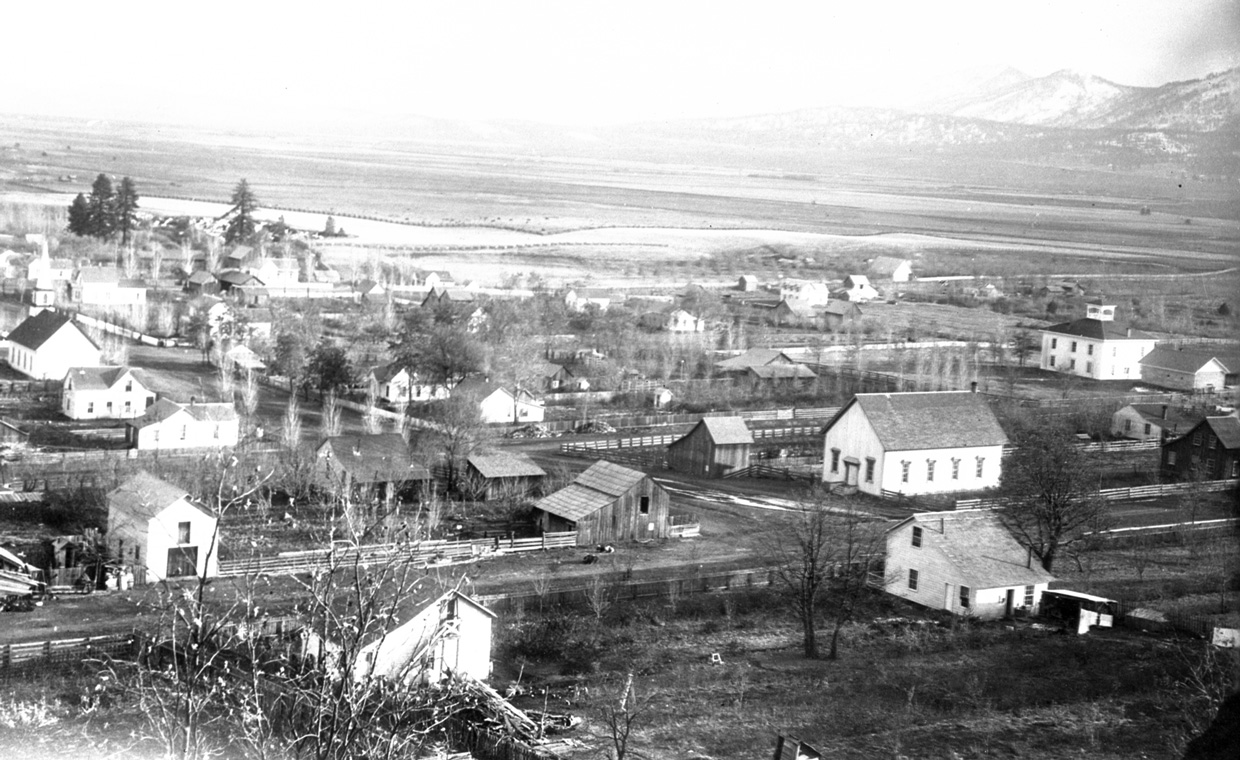
The murderer was taken before Justice James Branham for examination and sent before the Superior Court on March 7th. He was indicted and placed into the Lassen County Jail to await trial.
Holden Dick readily confessed to the heinous crime. He related that a man named A. B. Perry, after a morning of mutual whiskey consumption, had told him that he could make $800 by killing Shaw, and Perry then offered Dick $30 if he would help.
Perry had been offered the deal by a ‘white man’, and the man wanted Shaw’s head as evidence of the completed job.
The pair traveled to Shaw’s cabin and visited with him. After Shaw made a meal for them and cleaned the dishes, Dick shot him from behind and Perry began using a case knife to remove Shaw’s head. But the job was too difficult for the small knife. Dick then held the head, while Perry used an old hand saw to complete the task. They rode off with Shaw’s head secured in a bean sack.
After many miles of carrying the head, Dick grew weary and complained to Perry. They stopped and buried the head in some rocks, and then ‘split up’ with Perry going home to his cabin in South Fork.
Dick, after his confession, took Sheriff Rachford to where the head had been buried. The head was mostly missing, with only part of the bottom jaw remaining. Also, in the hole was discovered some loose buckshot and a few beans.
This confession included the first suspicion cast towards A. B. Perry, who had been found dead in his cabin in South Fork just about 12 days after the Shaw murder. Was his nickname ‘Billy’?
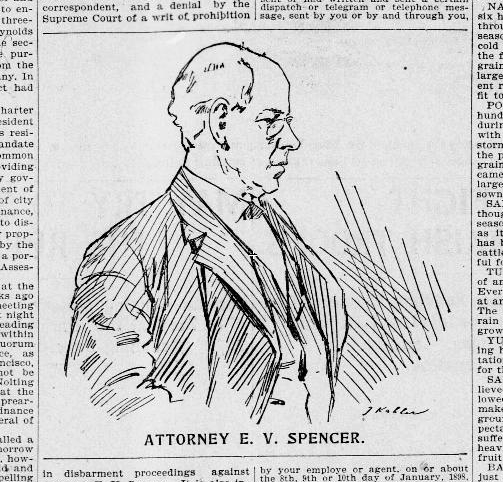
Dick sought the counsel of noted attorneys E. V. Spencer and John Raker. It has been said that Dick offered the two attorneys the map to his secret ‘gold mine’ in exchange for their help. Even so, Dick was convicted of the murder of Samuel Shaw and sentenced to death by Judge M. Marsteller. Spencer and Raker appealed the decision, so Dick sat in the jail awaiting further news.
Meanwhile, another appalling murder took place in Lassen County. On the evening of November 11th, 1885, Vicente Olivas, alias ‘Mexican Ben’, shot and killed Griffin Logan at a sheep camp about sixty miles from Susanville, near the Lassen and Shasta County border.
Another sheepherder named J. B. McCoy was wounded. Several others sat around the campfire and the entire group would have been executed by Olivas if his pistol had not misfired repeatedly. Again, Justice Roney was called in from Bieber to bring Olivas into custody.
Olivas, age 65 from Sonora, Mexico, was brought to Susanville, tried in Superior Court, and convicted of murder in the first degree. His conviction was appealed, and then his attorney made a motion for a new trial. His sentencing was postponed until January 26th.
So, Holden Dick and Vicente Olivas sat in jail awaiting further negotiations. Dick said that angels came to visit him in his cell, and he even drew pictures of them.
The Advocate newspaper reported that, “He must have seen them, for in every respect they are pictured as we have been taught to believe they look. He says the angels talk to him, but he is powerless to reply, (being in sort of a trance.) The devil is uncommunicative.”
The community was getting pretty disgusted by the machinations of the legal system. The idea that these two atrocious murders could take place, and have the perpetrators just sit comfortably in jail was infuriating for many.
Saturday night, January 23rd, 1886, was a big night for fun in Susanville. The Masonic Lodge had its banquet and later a dance at the Johnson House Hotel. Sheriff Jerry Leakey and Deputy Charlie Forkner, who usually slept at the jail, were at the dance, as was most of the town. It was the perfect time to do something ‘outside the law’.
Holden Dick’s wife was living in town, and she heard noises near the jail. Fearing a mob was after her husband, she ran to E. V. Spencer’s house to alert him and John Raker. Raker ran to find the Deputy, and together they went to the jail.
It was about 11:00p.m., and the jail was quiet, but the door was ajar and battered, as if a sledgehammer had been used to break the lock. Further inspection showed that the building was empty, and as they looked around outside the full impact of the evening’s event became apparent.
Holden Dick and Vicente Olivas were hanging from the cross beam of the woodshed, just to the south of the jail. In the dark, with the lanterns casting their glow, the ghastly sight appeared.
Dick, clad only in shirt and trousers, was covered with blood, his neck obviously broken, and his long hair was torn from his scalp. He had apparently been hung by his hair for a time, flailing in panic. It appeared that he had also been shot through the jaw.
A few feet away hung Olivas. Olivas was clad only in a shirt, with his trousers down around his ankles. His neck was also broken, and he had marks on his throat as though he had been strangled.
By the next morning, word had spread through the area and into newspapers all over the country. The bodies were left hanging for most of the day, and onlookers streamed to the area to see the sight.
The Times Union from Brooklyn, New York reported that, “The lynching is the most brutal one ever known in California,” and the Plumas County Bulletin said, “From what we can learn, the sentiment of the people both in Susanville and this section, is that justice has been done, although few citizens like to boldly advocate lynch law. Whatever may be said on either side, the lynching of these murderers will have a quieting effect on the criminal class in the northern part of the state.”
Perhaps the Advocate summed it up in the most civil way when they wrote, “We will not say that these culprits did not deserve hanging, but for the reputation of our town and county it would have been much better for the law to take its course.”
Coroner L. Sanders oversaw a jury to determine the specifics of the men’s death and concluded, “The deceased came to their death at the hands of parties to them unknown.”
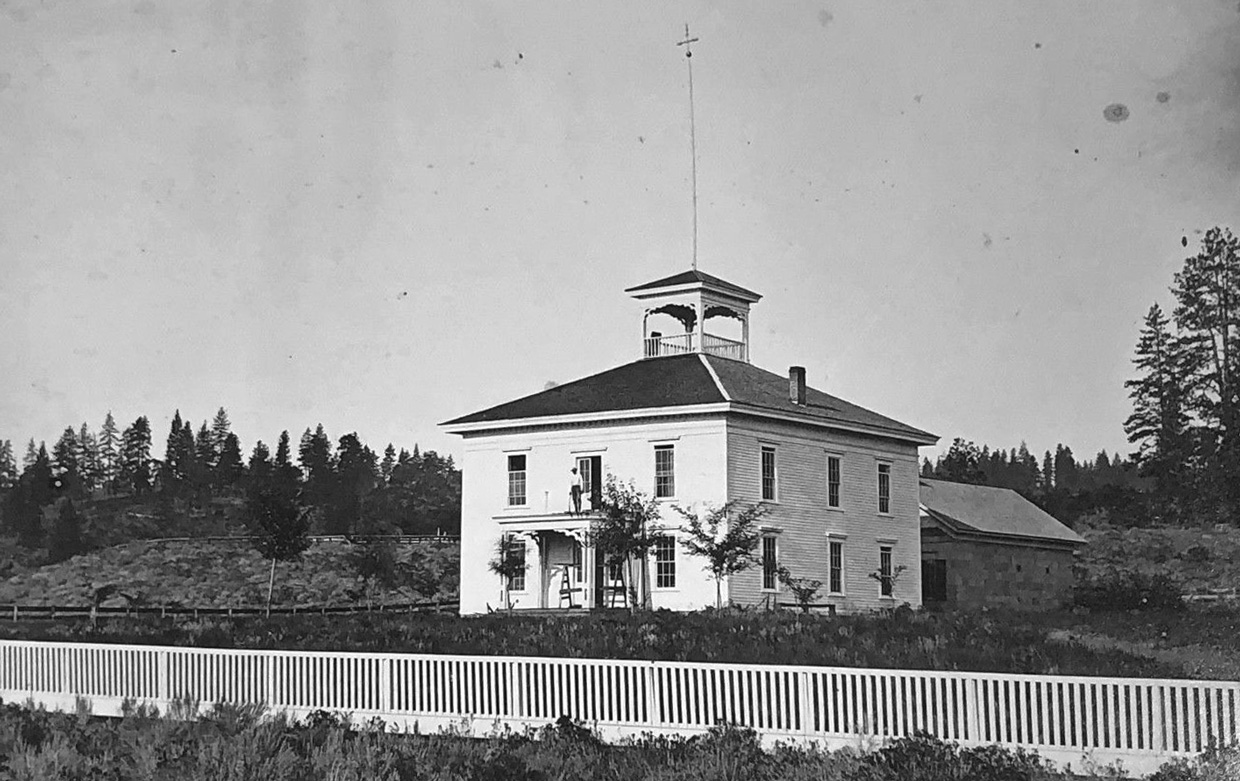
If you are a fan of our weekly history stories you should join the Lassen County Historical Society! It’s a fun way to be a part of our county’s rich history. When you sign up, you’ll receive regular Historical Society newsletters with interesting stories and information. Membership is open to anyone with an interest in area history.
Through your membership you help preserve local history. You can download a membership application by clicking here.





